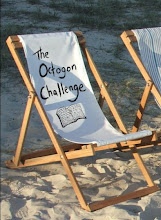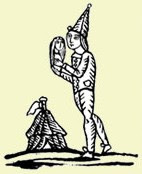
A train journey to and from Hull during one day last week provided an excellent opportunity to read and make notes for this months installment from this literary theory book.
Last month we covered chapters 2 and 3, about Labour and Gold Standards. Here are another 2 chapters for this months installment...
Chapter 4 - Thresholds
Earlier in the 19th century novels had been available in 'three-decker' form, that is in 3 volumes. This made novels expensive and out of the range of many peoples income. However, with the advent of serialisation in popular journals, there was a new format for writers to make use of. With the new one-volume novels at the end of the 1880's, at 6 shillings, the demise of the 3 volume novel came in 1895. Circulating and public libraries remained the main buyers of fiction, but to secure individual sales meant more profits for the publishers. The desires of the reader -consumer were now key, leading to the rise of the modern bestseller. This also led to a new diversity in writing.
To acheive bestseller status and the mass market, there needed to be recognition of the smaller groups of people within that mass market. W D Howells, Henry James's American mentor and friend, identified 2 markets for the novel. There was one type of fiction 'which was the equivalent of the circus or the variety theatre' which was 'essential to the spiritual health of the masses' (p66). The 'cultivated classes' demanded a different type of writing, one that was determined by fashion. This impacted on the way authors wrote. Modernism became 'the literary equivalent of the theory of marginal utility' (p67).
A new purpose drove the writing style of the Modernist period. The metaphor became the mode of choice when representing the world in fiction. It was argued that the Modernist writer did not want to experiment with the 'free-play' of language, so much as 'test our powers of inference', how a reader processes the text, making us dig deeply into our own emotions and experiences of the world, challenging our assumptions and generating rich contextual effects. Relevance theory 'analyses communication in terms of effort and effect'. Previous works had kept attention, memory and reasoning to a minimal effort. However the writers of the Modernist period could not be put into this category, that is James, Conrad, Lawrence, Joyce or Woolf could not be described as writers whose work required little effort in the reader. Many writers, especially James, stretched their readers by their use of syntax. 'Disturbances of linguistic structure alert us to the possibility that we may have to work very hard indeed in order to understand what the writer might mean us to infer' (p70). Lawrence employs a loose sentence structure devoid of any anticipatory devices. In Sons and Lovers and The Rainbow the awakening of the characters as they develop in the novel is portrayed as a negative experience, 'an awakening from an old life, rather than to a new life.' (p78). These new stylistic devices illustrate a new kind of change where the change remains unexplained.
Chapter 5 - Interiors
Expanding the theory of Modernist writers using established styles and then disrupting them, to stretch the experience of the reader by making them work for the meaning in the writing, we examine descriptions of rooms in various fiction to define relevance in the work.
In the popular fiction of Arthur Conan Doyle, we can compare Holmes and Watsons descriptions of a room as a crime scene to illustrate relevance and irrelevance. Watson describes the room using stereotype to convey meaning, whereas Holmes describes the seemingly irrelevant details with his superior obsevant eye to deduce the rooms secrets. 'Holmes embodies the Principle of Relevance, the guarantee that effort will be adjusted to effect.', (p82). Richard Hannay from The Thirty Nine Steps was the same, ignoring stereotypes to arrive at alternative scenarios.
Many authors set out to examine the 'condition of England' in their writing. Rooms represent the people who own them, providing excellent material to examine the condition of England. Rooms, houses, dwellings and establishments were endlessly used to represent the wider society within them. H G Wells in In the Days of the Comet uses description sparingly, using seemingly irrelevant items to provide an absence of relevance to enhance a world governed by irrelevance. Wells is at his best when forcing us 'to confront a surplus of information we cannot make sense of,' thus commenting on the condition of England'.
Galsworthy, Forster and Walpole all gave us houses with descriptions of relevant details to convey the owners character. Woolf and Lawrence identified the limitations of this. Wells invites new possibilites by using irrelevance, demonstrating the need for change in writing. Conrad destabilises characters identities by describing interiors from the outside, shattering their own illusions of themselves. Woolf also plays with expectations of narrative in Jacob's Room by describing the contents of Jacob's Cambridge University room being devoid of anything informative within. Jacob is simply not present in his possessions. His only presence is ghostly, and this is only in the minds of those who search his room after his death.
Contemporary works that illustrate the above points include...
Ulysses by James Joyce
Sons and Lovers by D H Lawrence
The Rainbow by D H Lawrence
The Thirty Nine Steps by John Buchan
In the Days of the Comet by H G Wells
Howards End by E M Forster
Heart of Darkness by Joseph Conrad
Victory by Joseph Conrad
Jacob's Room by Virginia Woolf
Look out for the next installment from this literary theory book which will be posted on this blog some time in May.















No comments:
Post a Comment